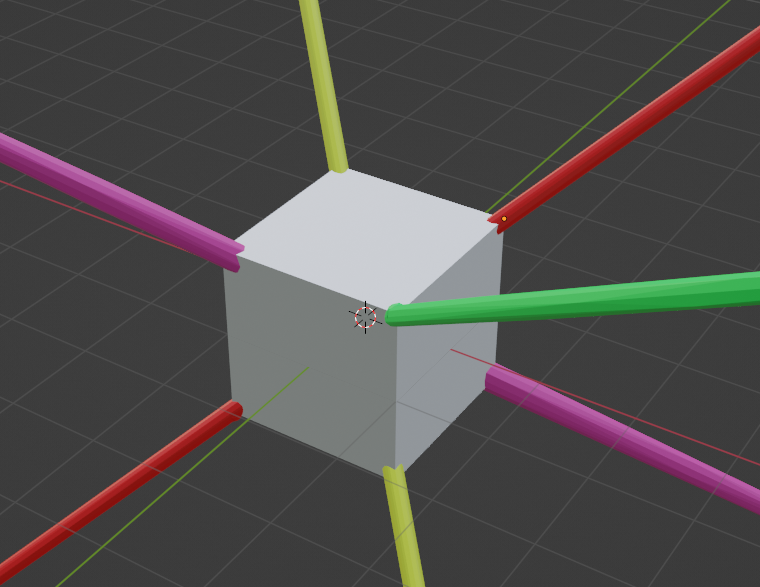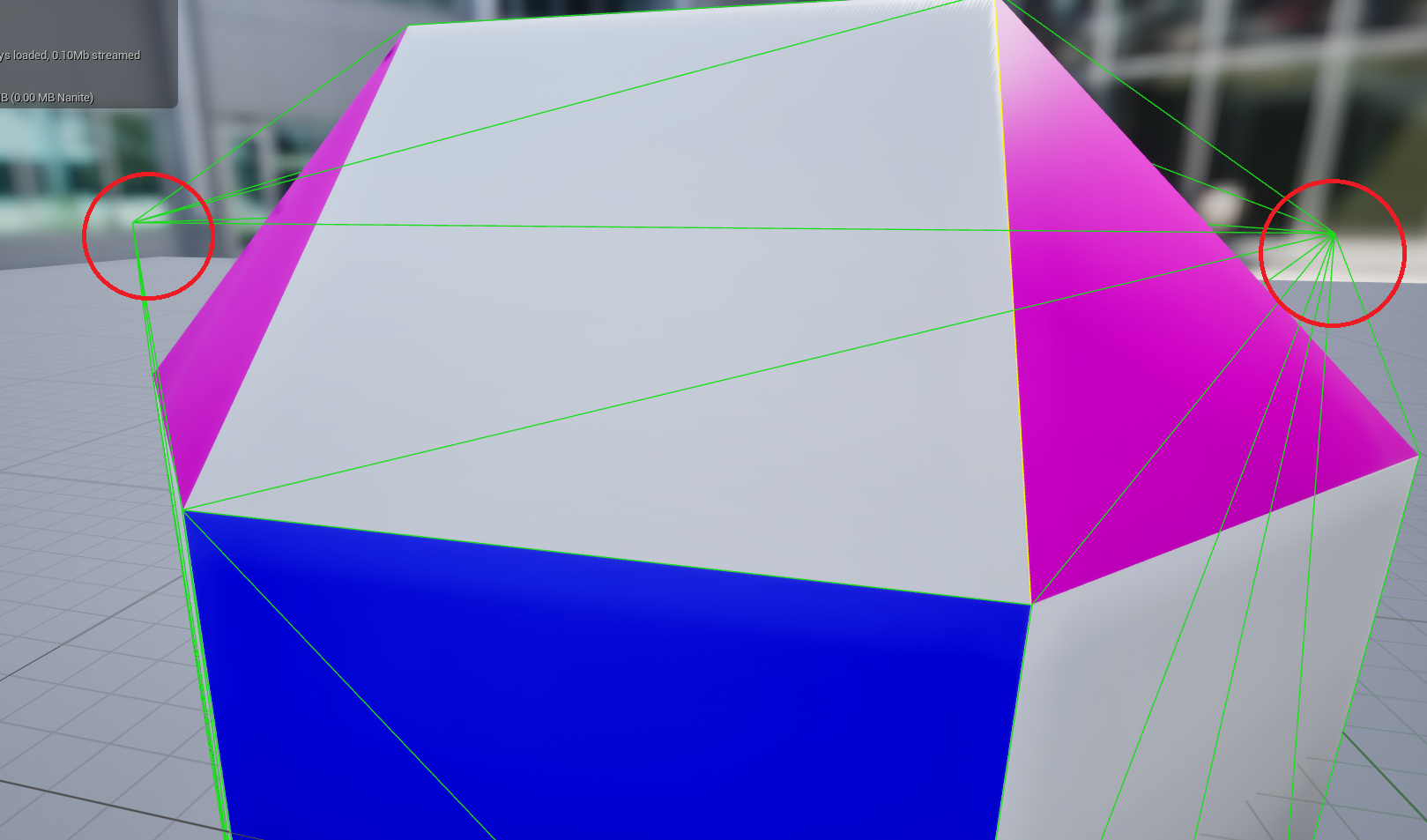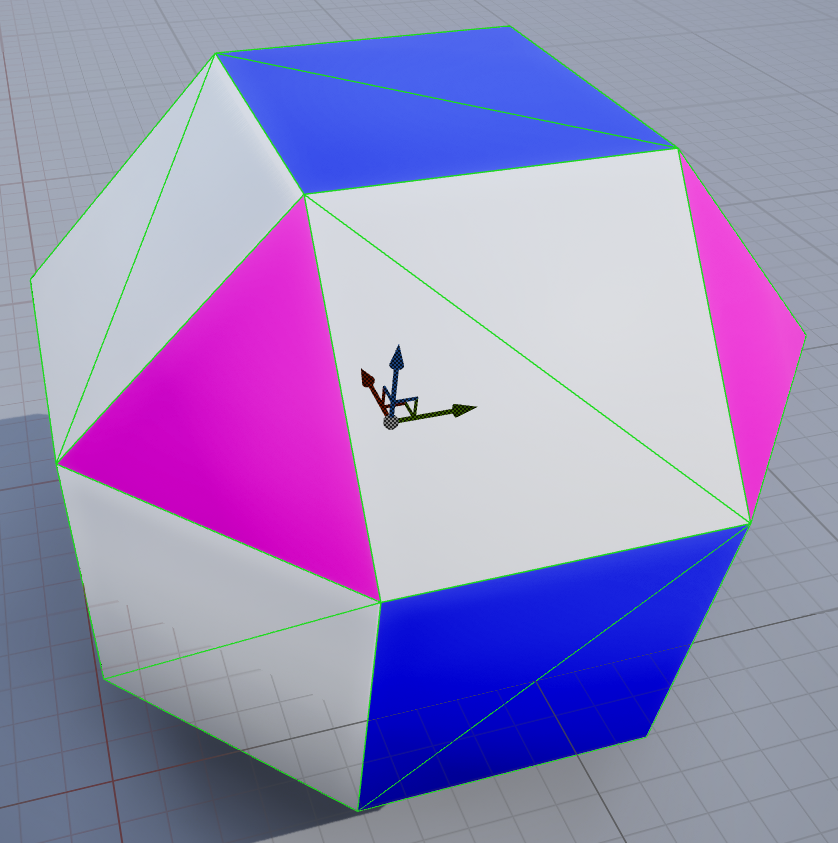K-DOP colliders in Unreal Engine
Unreal Engine’s colliders are not as intuitive as those in Unity. Particularly, it has colliders named N-DOP Simplified Collision, that may seem confusing at first.

Basically, how the official document describes each option is pretty accurate. However, without background knowledge, it may be difficult to fully understand the behaviour.
The original paper on K-DOP (Discrete Oriented Polytope) is publicly available and I think this is sufficient to understand K-DOP in Unreal Engine.
TLDR summary for those without time and my future-self: K-DOP first creates an AABB (Axis-Aligned Bounding Box), and bevels its edges only (18-DOP) or vertices and edges altogether (26-DOP). The 10-DOP options only bevel the 4 edges parallel to the X, Y or Z axis.
Slightly More Detailed Explanation
Suppose in a 2D space, we were to create a bounding-box representation of a shape by doing the following:
- Locate the ‘minimum’ and ‘maximum’ pixel of the shape along the x-axis. Draw vertical lines on those points.
- Locate the ‘minimum’ and ‘maximum’ pixel of the shape along the y-axis. Draw horizontal lines on those points.
- Create a rectangular bounding box from the intersecting points
This is basically 4-DOF in 2D space, also known as AABB.
the K in the name represents the number of orientations. It first encapsulates objects with H halfspaces. a halfspace H_i, whose normal is parallel to K_i direction, is placed on the ‘maximum’ point along the direction.
It then creates a bounding representation by taking the intersection of all.
As such, 4-DOF in 2D space is AABB if the 4 directions are <1, 0>, <-1, 0>, <0, 1>, <0, -1>.
To optimise computation, Half of the K directions are the opposite to the other half. This essentially creates K/2 unique axes and hyperplanes with one axis constrained by the min and max points.
Conventionally, the standard axes of D dimensional space are contained in the K directions. Therefore, What modifies the AABB created by the standard-axis hyperplanes are the hyperplanes along (K - 2 * D)/2 different axes.
In the paper, the author describes 14-DOP (4 add. axes), 18-DOP (6 add. axes) and 26-DOP (10 add. axes) in 3D space.
The 4 additional axes in 14-DOP penetrate the 8 vertices of a cube, 6 additional axes in 18-DOP penetrate the 12 edges and the 10 axes in 26-DOP are the combination of 14-DOP and 18-DOP.
 Each axis represented by a different colour.
Each axis represented by a different colour.
As such, Unreal Engine’s 18DOF Simplified Collision cannot accurately encapsulate a cube whose edges and vertices are beveled:

Whereas 26DOP Simplified Collision can because it bevels both vertices and edges:

The 10-DOP options are similar: they bevel the 4 edges of a cube that are parallel to a particular axis.